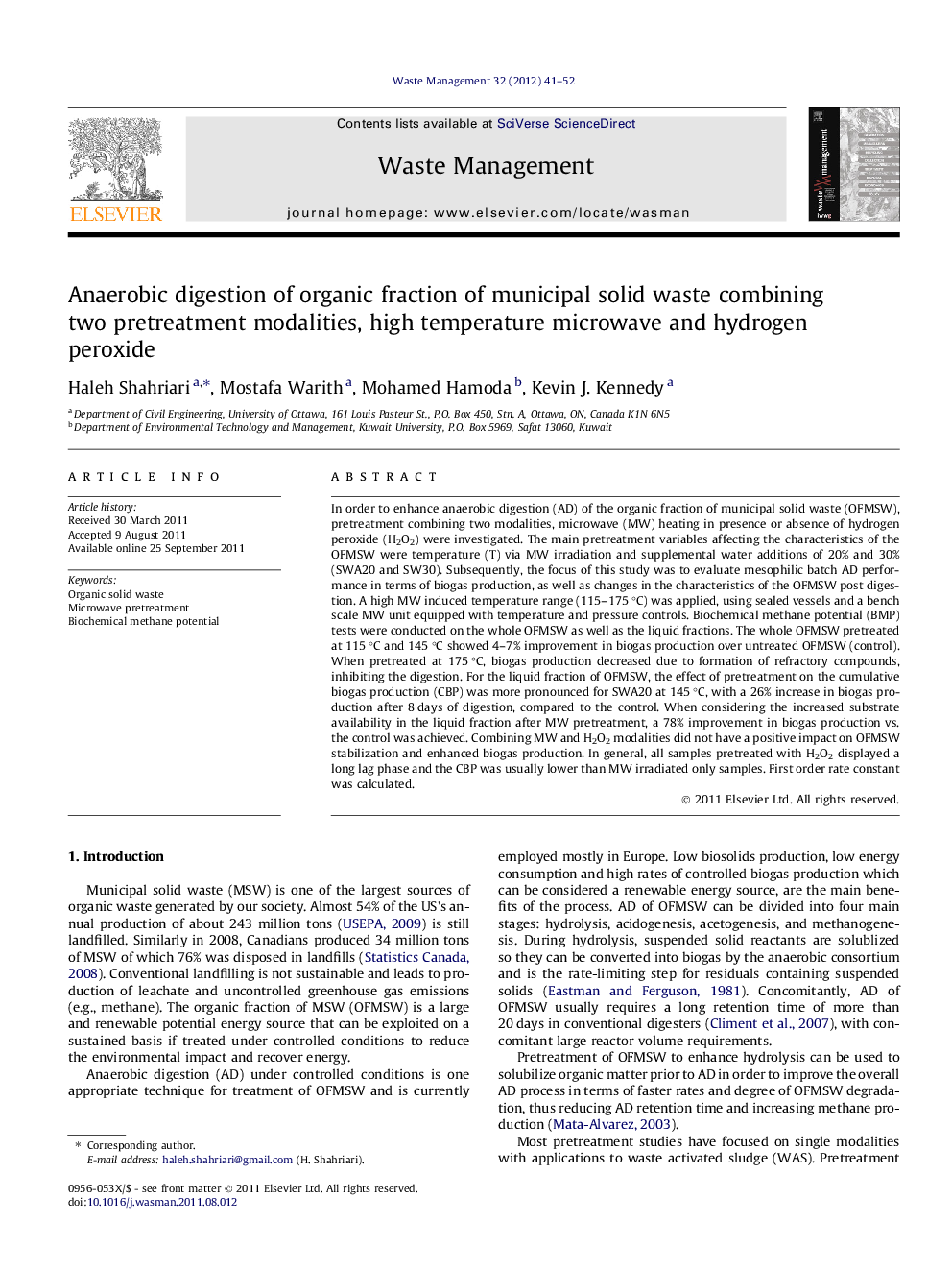| Article ID | Journal | Published Year | Pages | File Type |
|---|---|---|---|---|
| 4472335 | Waste Management | 2012 | 12 Pages |
In order to enhance anaerobic digestion (AD) of the organic fraction of municipal solid waste (OFMSW), pretreatment combining two modalities, microwave (MW) heating in presence or absence of hydrogen peroxide (H2O2) were investigated. The main pretreatment variables affecting the characteristics of the OFMSW were temperature (T) via MW irradiation and supplemental water additions of 20% and 30% (SWA20 and SW30). Subsequently, the focus of this study was to evaluate mesophilic batch AD performance in terms of biogas production, as well as changes in the characteristics of the OFMSW post digestion. A high MW induced temperature range (115–175 °C) was applied, using sealed vessels and a bench scale MW unit equipped with temperature and pressure controls. Biochemical methane potential (BMP) tests were conducted on the whole OFMSW as well as the liquid fractions. The whole OFMSW pretreated at 115 °C and 145 °C showed 4–7% improvement in biogas production over untreated OFMSW (control). When pretreated at 175 °C, biogas production decreased due to formation of refractory compounds, inhibiting the digestion. For the liquid fraction of OFMSW, the effect of pretreatment on the cumulative biogas production (CBP) was more pronounced for SWA20 at 145 °C, with a 26% increase in biogas production after 8 days of digestion, compared to the control. When considering the increased substrate availability in the liquid fraction after MW pretreatment, a 78% improvement in biogas production vs. the control was achieved. Combining MW and H2O2 modalities did not have a positive impact on OFMSW stabilization and enhanced biogas production. In general, all samples pretreated with H2O2 displayed a long lag phase and the CBP was usually lower than MW irradiated only samples. First order rate constant was calculated.
► Microwave and H2O2 pretreatment were studied to enhance anaerobic digestion of organic waste. ► The whole waste pretreated at 115 °C or 145 °C had the highest biogas production. ► Biogas production of the whole waste decreased at 175 °C due to formation of refractory compounds. ► Pretreatment to 145 °C and 175 °C were the best when considering only the free liquid fraction. ► H2O2 pretreatment had a lag phase and the biogas production was not higher than MW pretreated samples.
